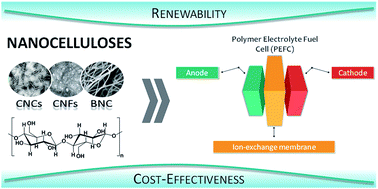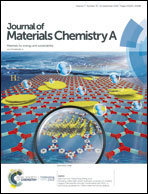Nanocellulose-based materials as components of polymer electrolyte fuel cells
Abstract
Hydrogen is a clean energy carrier and fuel cells (FCs) are an efficient conversion technology, and thus have become mainstream research topics that could contribute to sustainable and clean energy supply in modern society. Among the various hydrogen FC types that convert chemical energy into electrical energy via redox reactions, polymer electrolyte fuel cells (PEFCs) are the most studied technology due to their vast range of applications both mobile and stationary. The use of bio-based materials as substrates for the manufacture of the key constituent components of FCs, to minimize the impact of their production, although in its infancy, is growing exponentially as part of the general concern for sustainability. In fact, natural polymers such as cellulose (i.e. the most abundant biopolymer), and in particular its nanoscale forms, viz. cellulose nanocrystals (CNCs), cellulose nanofibrils (CNFs) and bacterial nanocellulose (BNC), are appropriate materials to engineer the key components of PEFCs, namely the ion-exchange membrane and the catalyst layer (anode and cathode). Despite the intense R&D activity, little has been reviewed about the potential application of these three forms of cellulose with at least one dimension in the nanoscale in the field of FCs. Hence, the overarching goal of this review is to concentrate on the most recent efforts in the domain of bio-based PEFC components, namely the ion-exchange membrane and the electrodes, by targeting the use of nanocellulose as a renewable and easily foldable or stackable nanomaterial. The application of these nanocellulose-based components in microbial fuel cells (MFCs) is also covered.

- This article is part of the themed collection: Recent Review Articles


 Please wait while we load your content...
Please wait while we load your content...